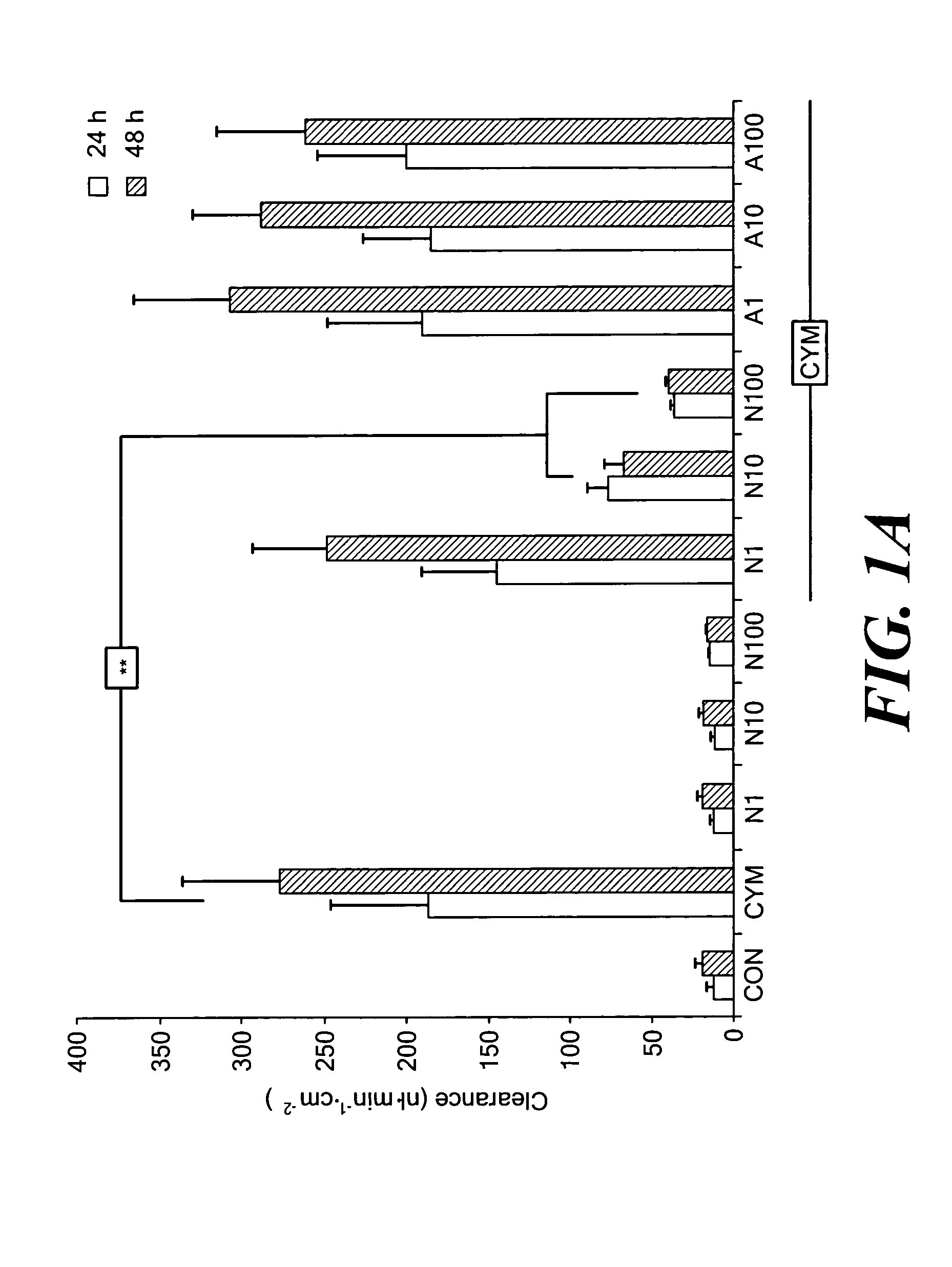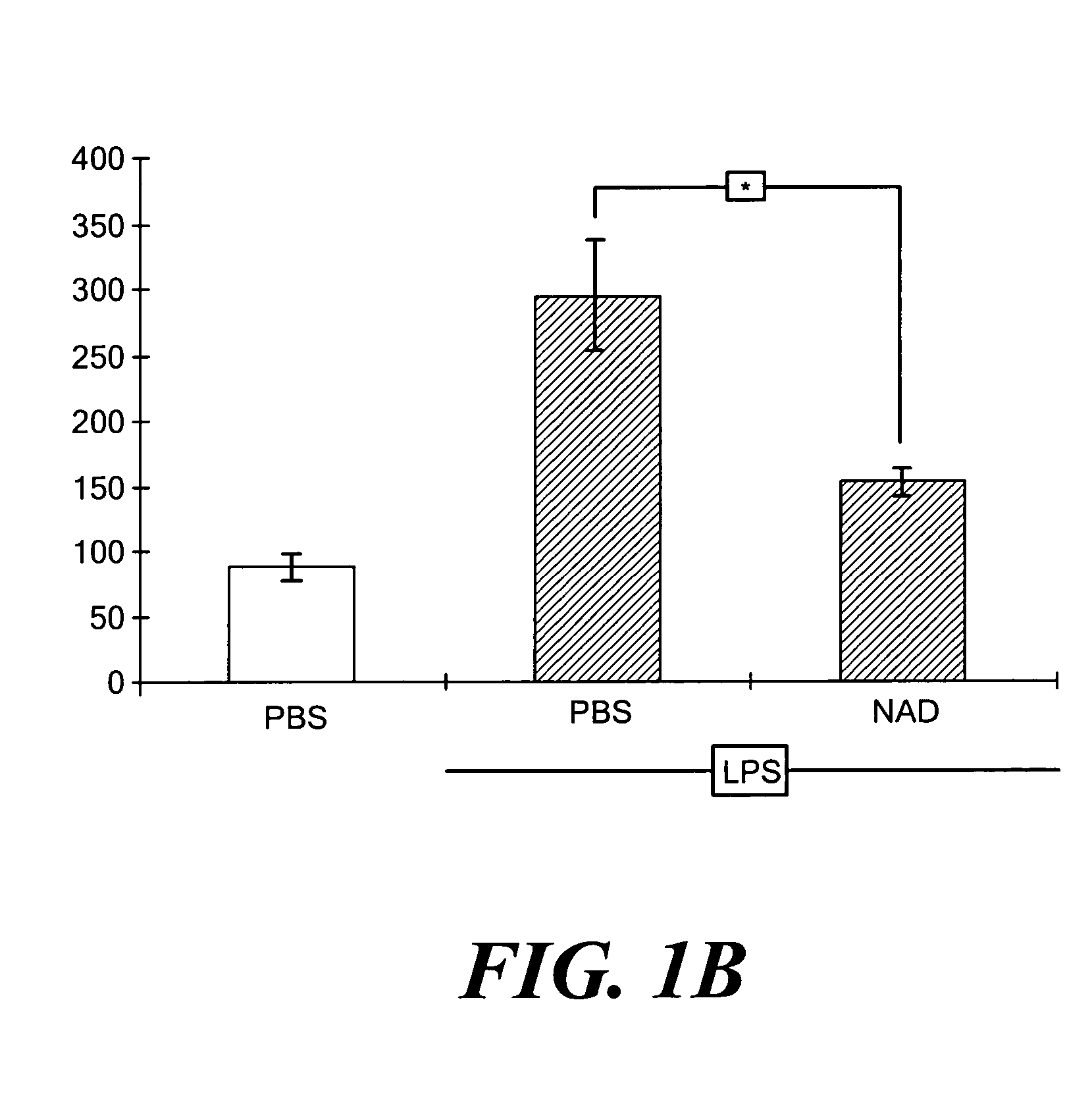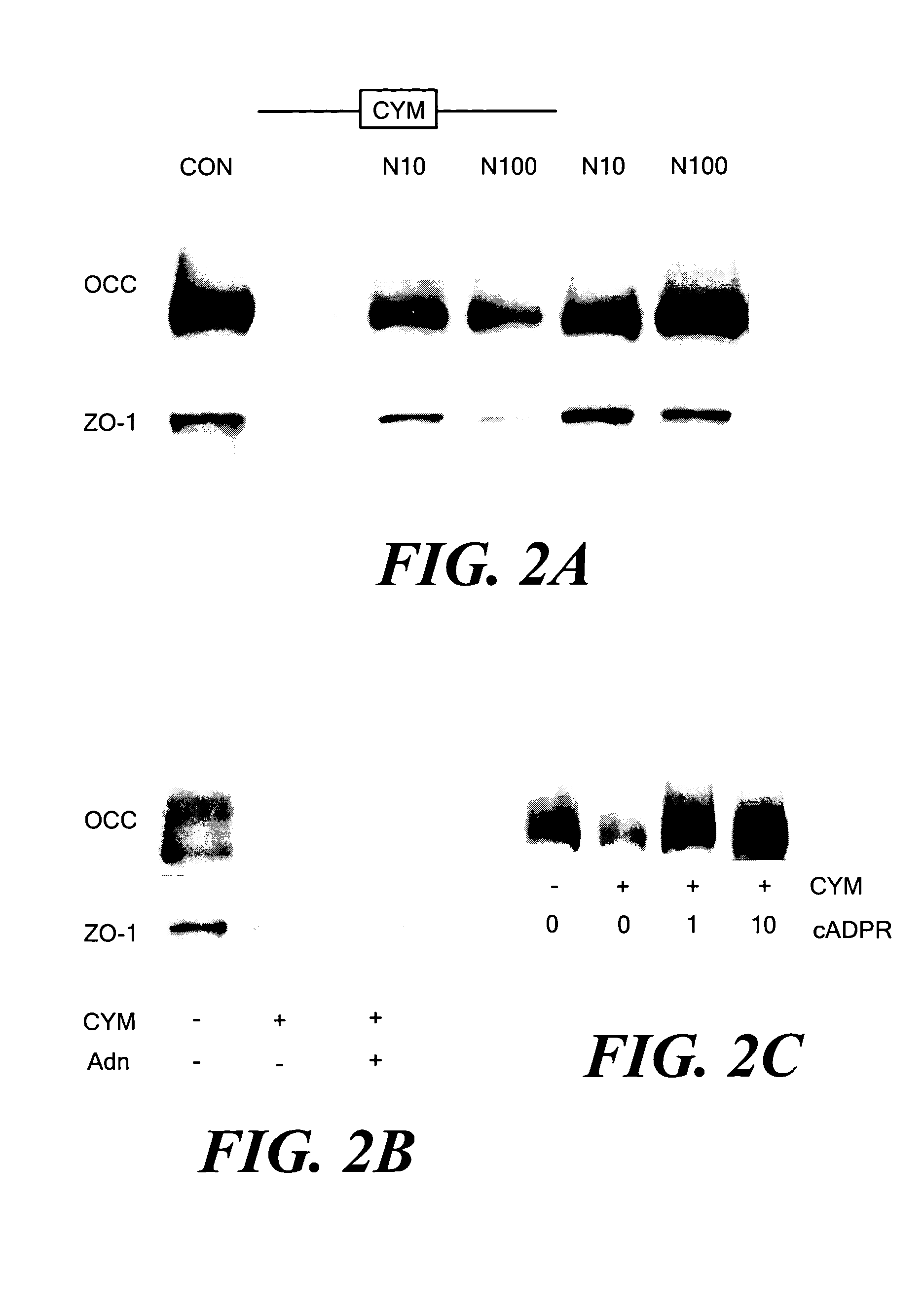Extracellular NAD+ and cADPR as potent anti-inflammatory agents
a technology of nad + and cadpr, which is applied in the direction of biocide, organic chemistry, drug compositions, etc., can solve the problem of inability to find effective treatments
- Summary
- Abstract
- Description
- Claims
- Application Information
AI Technical Summary
Benefits of technology
Problems solved by technology
Method used
Image
Examples
examples
[0029]The following examples are presented to illustrate the advantages of the present invention and to assist one of ordinary skill in making and using the same. These examples are not intended in any way otherwise to limit the scope of the disclosure.
Materials and Methods
[0030]Reagents. All chemicals were from Sigma-Aldrich Chemical Co. (St. Louis, Mo.) unless otherwise noted. Recombinant human cytokines were obtained from Pierce-Endogen (Rockford, Ind.).
[0031]Animals. This research complied with regulations regarding animal care as published by the National Institutes of Health and was approved by the Institutional Animal Use and Care Committee of the University of Pittsburgh. Male 7-8 week old C57Bl / 6J mice weighing 20-25 g were from Jackson Laboratories (Bar Harbor, Me.). To induce a systemic inflammatory response, mice were injected intraperitoneally (IP) with Escherichia coli (strain O111:B4) LPS (17 mg / kg) dissolved in 1.0 ml of PBS. Control animals were injected with a simi...
example i
Extracellular NAD+ Preserves Intestinal Epithelial Barrier Function ex vivo and in vivo
[0038]Caco-2 monolayers growing on permeable supports were left untreated or exposed to cytomix for 24 or 48 h in the absence or presence of graded concentrations of NAD+ or adenosine. Paracellular permeability was determined by measuring the apical-to-basolateral flux of FD4. Epithelial permeability was unaffected when monolayers were incubated with NAD+ alone. Exposing Caco-2 cells to cytomix increased the clearance of FD4 across the monolayers (FIG. 1A). Addition of NAD+ ameliorated cytomix-induced epithelial hyperpermeability in a concentration-dependent manner. The protection afforded by 10 and 100 μmol / L NAD+ was statistically significant.
[0039]NAD+ is structurally related to a nucleoside, adenosine, that is known to exert anti-inflammatory effects by binding to certain purinergic receptors;24 accordingly, the possibility that activation of a receptor for adenosine was responsible for the am...
example ii
Extracellular NAD+ Ameliorates Derangements in TJ Protein Expression and Cellular Localization Caused by Cytomix
[0041]Proinflammatory cytokines are known to alter the expression and localization of several TJ proteins in cultured intestinal epithelial cells, including occludin, claudin-1 and ZO-1.9,10 Whether NAD+ preserves the expression and targeting of TJ proteins in cells that were exposed to cytomix was tested. Caco-2 cells were grown in the absence or presence of cytomix or NAD+, and NP-40-insoluble protein complexes were isolated after 48 h. The insoluble complexes, which represent insoluble cytoskeletal proteins and associated TJ proteins,26,27 were solubilized with SDS and subjected to immunoprecipitation followed by immunoblotting with anti-occludin or anti-ZO-1 antibodies. Exposure to cytomix for 48 h markedly decreased the amounts of occludin and ZO-1 present in TJs (FIG. 2A). When cells were simultaneously incubated with cytomix and 10 or 100 μmol / L NAD+, normal levels ...
PUM
| Property | Measurement | Unit |
|---|---|---|
| volume | aaaaa | aaaaa |
| pore size | aaaaa | aaaaa |
| pH | aaaaa | aaaaa |
Abstract
Description
Claims
Application Information
 Login to View More
Login to View More - R&D
- Intellectual Property
- Life Sciences
- Materials
- Tech Scout
- Unparalleled Data Quality
- Higher Quality Content
- 60% Fewer Hallucinations
Browse by: Latest US Patents, China's latest patents, Technical Efficacy Thesaurus, Application Domain, Technology Topic, Popular Technical Reports.
© 2025 PatSnap. All rights reserved.Legal|Privacy policy|Modern Slavery Act Transparency Statement|Sitemap|About US| Contact US: help@patsnap.com



